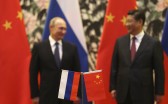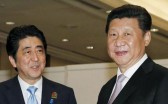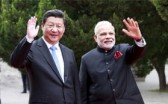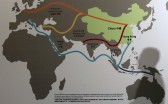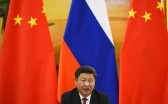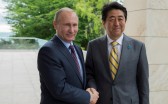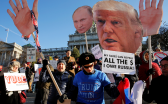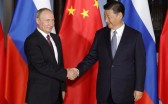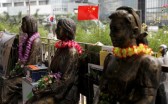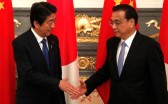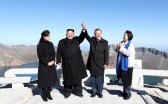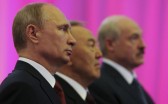At present, the level of regional cooperation between Russia and China clearly does not correspond to the level of relations between the leadership of the two countries, which is described as “the best relations in all of history.” In actuality, the observer would be stunned by the absence in cities of the Russian Far East of Chinatowns or Chinese factories. The scale of Chinese investments in the economy of the region falls significantly below that of countries such as the Netherlands, the Bahamas, and Cyprus. Most of all, Chinese investors would like to put their funds into the extraction of resources and also in agriculture; however, precisely in those sectors is where the activism of Chinese business arouses staunch opposition in Russian public opinion, even at the stage when initiatives are only being discussed. Given these obstacles, a positive scenario applies to overall national relations and, at best, to uncertain prospects at the local level, but there are recent signs of improvement.
Positioning itself as a “great power,” Russia does not know or understand China, and, as a result, does not trust it. The mass media and populist politicians still shout about the “yellow peril” as a way to arouse emotions and pretend to resolve the day-to-day problems of the people. The inertia of imperial consciousness, which is actively revived by contemporary Russian ideologues, may be significant for the populated regions of European Russia, but not for residents of the Russian Far East, who without central budget financing can be left to live in a sparsely populated desert with beautiful nature and favorable ecology, but almost without production, roads, and intellectual infrastructure. The new Russian elite soon will have to make a choice between the threat of weakening administrative control over outlying regions and the risk of losing the Russian population of the Far East, which without a more lively economy or subsidies will simply disappear. Judging rationally, the choice should favor the first variant, especially if one considers that China, with further reexamination, turns out to be not so foreboding.
In the 1990s, against the background of the weakening state role in Russia’s Far East, the informal economy, based on entrepreneurship of the local residents and using contraband and illegal schemes with the participation of local, corrupt officials, was actively developed. One of the main elements was practically uncontrolled import into Russian border areas of cheap goods from China, the presence of which “killed” the possibility of establishing local industry, which from the time of the Soviet Union had been uncompetitive in civilian production, although it did and still does produce for the armed forces higher quality goods. Vast sums of capital, which passed through corrupt officials, could not develop the territory, since to invest in industry was unprofitable.
From the beginning of the new century, the main source of income in the region became allocations from the federal budget. Entire sectors became “prisoners” of this easy, guaranteed money, which was used to buy the loyalty of the local officials and population without exerting special effort to develop the economic potential of the region. The situation changed in dramatic fashion after the sharp fall in price of oil in 2014 to 2016. The culmination of Moscow’s investment in the region remained two bridges and the university campus in Vladivostok—objects, which by themselves, could not earn money and bring this region international investment. Regional budgets fell into deficit, from which the center no longer was able to drag them away. It became necessary to search for other ways out of the situation and understand that “pride and prejudice” are not the best sources of guidance in international relations. This process may take considerable time, but below I point to possibilities that are beginning to alter the status quo in the region and might, in a positive scenario, make a profound difference.
Russia: Changes that May Follow from Shifting Exchange Rates
The collapse of the ruble in relation to the yuan in 2014 to 2016 has the potential to fundamentally change the situation on the border. Busses loaded with local produce, could reverse direction: from Russia to China. It could become clear that Russian goods not only are cheaper but are more attractive for customers from China than are Chinese goods. Imported ecologically clean products (in the Russian Far East, comparative to China, there is practically no industry) could find their niche in China, becoming the favored goods for the rapidly expanding middle class.
A significant number of people, who earlier were busy with contraband and with siphoning off budget revenue, have been left without their customary income. This could force them to redirect their energy to the establishment of small-scale industries or farms, which make products for export to China. Previous ties with “business partners” in China could again prove useful, but now their effect would be to begin the development of production. Often Chinese capital would, one presumes, be invested under the guise of being Russian, which would make possible churning out goods to meet the demand in China, such as for wheat, soy, beer, chocolate, and maritime products. Many of the new enterprises would open in areas of Primorskii krai newly endowed with special privileges (“territories of advancing development” and the free port of Vladivostok). Tourism could become another important source of income in the region. By Chinese standards, the scale of the “new production” would not be large, but for the Russian economy, it would become substantial. Stable work would change the relationship between society and the local authorities to these businesses. Local residents, who earlier had dreamed of moving to Moscow or a small settlement in its environs, would stop moving away. When, subsequently, a shortage of labor would be felt, and the main regional centers—Vladivostok, Ussuriysk, Khabarovsk, and Blagoveshchensk—would become magnets of attraction for residents from across eastern Russia. Especially thriving would, presumably, be Vladivostok, which might begin to be called the “eastern capital of Russia” and the “new Constantinople.” In 2022, in the new complex of government buildings on Russky Island, some federal ministries and even the administration of a vice-president (whose charge would be the management of the Asian part of Russia) would be transferred. Such administrative changes are a fantasy now, but they are suggestive of what one could imagine to be a far-reaching shift toward the region.
Fear concerning Chinese labor migration might, in these conditions, disappear. It may well turn out that Russian wages are not appealing even for those leaving China’s border regions, and it is cheaper for locals to hire migrants from Uzbekistan, Tajikistan, and also North Korea and Vietnam. Against the background of an increase in ”foreigners” from these countries, xenophobia in this region’s public opinion would turn negative toward them, while, in contrast, Chinese would become accepted as desired, rich clients and reliable partners. Chinese digital technology and even automobiles would become popular among the local population, who are finding European and American products much less accessible.
China: In Search of a New Model of Development
By mid-2016, China stood before serious challenges connected to the drop in tempo of its growth in gross national product (GNP), a crisis of “bad debts” of regional administrations, and the tired condition of its state sector and the necessity to conduct painful reconstruction of its main enterprises, firing huge numbers of unqualified workers. In response to these challenges, Beijing has turned to a continuation of its “big building,” developing infrastructure in China and striving to boost orders abroad for constructing roads, railroads, airports, and entire cities in return for credits offered from China. Contracts from Russia could include construction of an absolutely new, contemporary highway, Vladivostok-Moscow, a high-speed railroad, Hunchun-Vladivostok-Khabarovsk, and new urban regions in the biggest cities of the Russian Far East. In the near future, the two sides might expect to complete construction of the bridge across the Amur between Blagoveshensk and Heihe, which would signify that, finally, Russian local officials will discard a policy of “braking” cooperation with China.
Another “recipe” to overcome a reduction in loyalty of the Chinese population to the ruling party may be artificially to arouse a rise in nationalism and militarization of the society. Against the background of aggressive rhetoric regarding the United States, China may be putting its trust in strengthening itself as the leader of all of eastern Asia. Military reforms in early 2016 prioritize the navy over land forces, and Russia may now become essential for China as a reliable partner, which allows it to employ on its northern borders only a small amount of armed forces, designated mostly to fight against terrorists, separatists, and suppression of oft-occurring public disturbances. This, however, would deprive the “power lobby” of Russia of its last arguments tied to the “yellow peril.”.
Putin and Xi Jinping, both strengthening their regime through personal authority, have maintained good personal relations, based on trust and mutual respect. In China, applying censorship, sharp and provocative statements in the mass media could be avoided in order “not to frighten” their Russian partners. Gradually, Russia could do the same thing. In order to tie Russia to itself, Beijing would find it helpful to attract some big companies to the economy of eastern Russia. At first, this would occur solely by administrative means, and even by covering losses that companies suffered; however, in this way the important task of establishing “successful cases” would be achieved. Subsequent investments would occur through a “snowball effect.” It would suffice to apply the pressure of Chinese and Russian authorities at the central and regional levels in order to realize some successful projects so that Chinese investors, attracted by the example of their compatriots, would begin to expand their business in Russia. In the Russian Far East, there would appear farms with marine culture, hotels, resorts, casinos, plants for production of complex digital technology, and data-centers.
Main Obstacles in the Path of a Positive Scenario and Required Conditions
1) Negative public opinion in Russia regarding “opening” eastern regions for full-scale cooperation with China; 2) the absence of motivation for local authorities for two-sided cooperation in the face of other priorities (in Russia, problems of national security and ensuring the victory of the “party of power” on its territory; in China, ensuring a high rate of growth in gross domestic product [GDP], which in the current situation of cooperation with Russia still cannot be met); 3) high expenses for production and logistics in the eastern regions of Russia, where the population is sparse and the local market is on a tiny scale; 4) the absence in Russia of laws on separate aspects of cooperation (e.g., in marine culture) and the incompleteness of laws tied to attracting international labor and foreign investors; 5) the absence of a “history of success stories” of Chinese investments in the eastern regions of Russia; 6) the desire of regional elites in Northeast China for “closed” cooperation with eastern Russia in the absence of real possibilities for increasing the quality of investments; and 7) the insufficient level of expertise in Moscow and Beijing on problems of development of regional cooperation. These are main obstacles standing in the way of a positive scenario.
For realization of a positive scenario, these are essential steps: 1) continuity of the high leadership and maintenance of authoritarian regimes in Russia and China, under which the state has the possibility to overlook public opinion, which at present is negatively inclined toward cooperative relations between the two states, and to inculcate their visions of relations through the mass media and “politicians in their pocket”; 2) gradual replacement of the political elite in Russia, transitioning from “conservatives” acting from nostalgia for the imperial and Soviet past of Russia to “pragmatists” supporting the use of all available means for improving the socio-economic situation; 3) nationalization of the elites in Russia and China, no longer under the spell of extreme dependency on the West; 4) maintenance of the current competitive prices and exchange rate (weak ruble, strong yuan), which makes Russian production competitive and Russian goods and services attractive to the Chinese market; and 5) maintenance of the current demographic tendencies in China, which are leading to a reduction in labor resources and the end of a realistic chance for massive labor migration out of China.
Conclusion
Most necessary conditions for movement toward a positive scenario already exist; however they are not being used in Russo-Chinese regional cooperation. This is explained by the fact that Russia, as before, does not trust China, and China is not very interested in Russia since there are other, more profitable and convincing targets for investment and migration. All could change only if the current crisis forces both sides to take bold steps. If Russia in the face of economic degradation of entire regions were to decide that it is necessary to turn away from interpreting the world through the prism of its historical greatness, it could use the might of the Chinese economy for its own good fortune. China could provide Russia with both investments and technology that it needs. However, if Russia were to agree to full-scale cooperation with China, it would have to recognize the fact that, in the new model of bilateral relations with its southern neighbor, it would be relegated to the role of junior partner. This is the current economic reality and the facts of life for a sparsely populated, depressed region in the east of Russia without an alternative apart from developing cooperation with China.
China will never be successful in its cooperation with Russia if it does not grasp the simple fact that Russia is fearful of allowing into its territory millions of Chinese workers and outdated, ecologically dangerous production. China should offer to Russia massive investments and contemporary production and try to reorient ties only to the supply of Chinese workers and the use of its equipment. If it acts in this manner, it will find a reliable partner.

